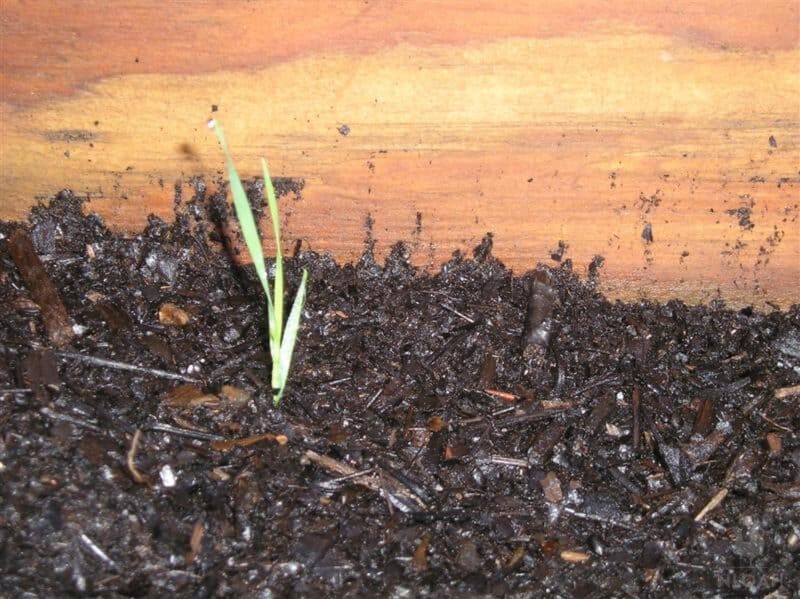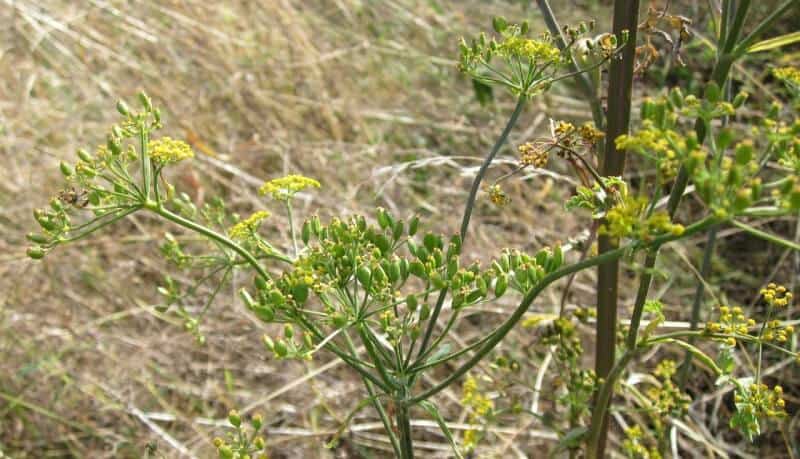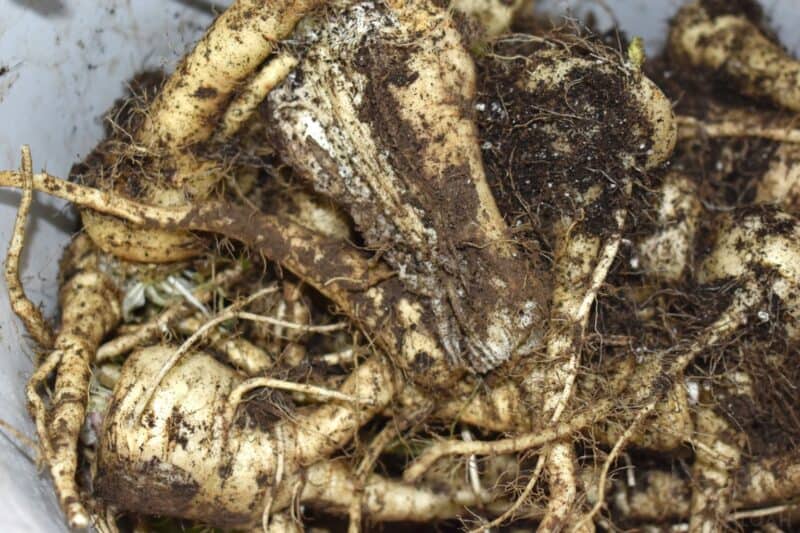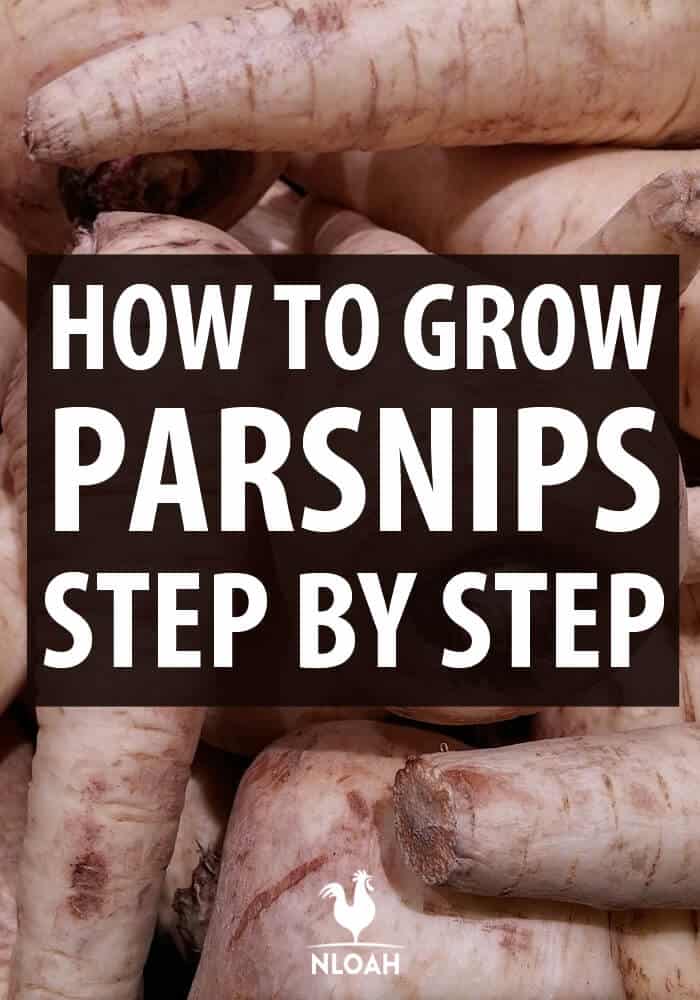Native to Europe and Asia, parsnips have been a dinnertime staple in North America since the early 1700s. These tasty root vegetables were used in ancient medicine to relieve toothaches and even achy feet!
While parsnips may not be effective for those particular old household remedies, they offer a range of other health benefits and are easy to grow in a backyard garden.

Why You Should Grow Parsnips
Parsnips are sweet and savory at the same time. These vegetables are in season between November and April, and actually belong to the same family as parsley and celery, as well as, most notably, carrots.
Parsnips are high in fiber and low in calories, offering a tasty snack that is sure to fill you up. These plants contain high levels of vitamin C, folate, manganese, and other nutrients. Including parsnips as part of your regular diet can help improve your health and reduce your risk of a number of serious disease.
Because parsnips are high in fiber, they can help reduce your risk of diabetes and high blood cholesterol. In turn, this can also help lower your risk of obesity, and more.
Folate, another nutrient found in the parsnip, is important for pregnant women who require a minimum of 600 micrograms of folate daily. Folate helps decrease the risk of birth defects and also helps to regulate your nervous system health and function.
Parsnip also contain potassium and vitamin C. Each half-cup serving of cooked parsnips contains six percent of the recommended daily requirement of potassium.
Potassium helps maintain skeletal, cardiac, and muscle functioning. These delicious vegetables also contain thirteen percent of the recommended daily requirement of vitamin C, helping to boost your immunity, oral health, and blood functioning.
You can increase your absorption of these nutrients by eating parsnips raw. Use the vegetables within a few days of harvest, and cut them just before you cook or eat them to help them retain water.
There are dozens of potential uses for parsnips, and they are hardy in zones 2A through 9B. This means that they can be grown just about anywhere, by any gardener.
They’re typically planted and harvested in the cold, helping to extend your garden’s growing season and adding a new type of produce to your harvest basket.
Varieties of Parsnips
There are hundreds of different parsnip varieties, with the plant predating even the potato as a cultivated species. Because it is has been grown commercially and by backyard gardeners for such a long time, there has been considerable experimentation with parsnips genetics.
This has produced a wide variety of cultivars for you try in your garden. For best results, plant several at a time so that you can compare and contrast the different types.
The Harris Model is one of the most popular types of parsnips for home gardeners. This plant has smooth, white skin and a finely-grained flesh. It grows to a whopping fifteen inches in length, taking about 130 days to mature. The plant produces straight roots, making it ideal for most soil types, and does well in partial shade as long as you don’t overwater it.
The Hollow Crown is a unique heirloom parsnip from England. It is aptly named, possessing a hollow structure at the base of the leaves that bears the appearance of a crown. This plant thrives in winter weather, actually becoming sweeter in flavor as the weather worsens. The seeds of this plant take a long time to germinate – up to three weeks – but it does well in most well-drained, acidic soils.
The All American parsnip grows quickly and is ideal for individuals who live in areas with short growing seasons. It can be harvested in fewer than 100 days and has sweet, tender flesh. This disease tolerant species is usually harvested in the fall but can be left outdoors throughout the winter if protected by mulch.
The Student is another heirloom parsnip variety. It is one of the oldest varieties, dating back to the mid-1800s. It produces roots up to 30 inches long and has a mild flavor. Although it can be left in the ground after the first few frosts, it usually only takes around a hundred days to mature.
Finally, the Cobham Marrow is another favorite type of parsnip. It is smaller, producing roots that are only about eight inches in length. This is the sweetest type of parsnip, with its tubers often used in desserts or sweet casseroles. It takes a long time to germinate, like the Hollow Crown, but offers a mild flavor this is well worth the wait.

Planting Parsnips
Before planting your parsnip seeds, make sure you have selected the best possible planting site. Choose a location that receives plenty of direct sunlight (at least three hours a day) and is filled with light, well-drained soil. Loam soils work best. If you don’t have soil that is naturally loamy, you can amend it with organic matter to improve its structure.
If you are fertilizing the soil where your parsnips will be planted, remember that anything put on the ground will be transferred onto your parsnip plants, since you eat the roots of this crop. That being said, you should avoid chemical fertilizers as well as unaged manure.
Most people will plant parsnips directly from seed. As a root crop, they don’t transplant well. This is because the seed containers used to start seeds are typically too shallow for parsnip plants, and their fragile roots will be compacted and then disturbed when they are later planted.
In addition, it’s difficult to save parsnip seeds between seasons, because they have a lower overall germination rate than other types of vegetables.
You will need to buy parsnip seed every year to ensure that it will be viable. You can sow early in the season, but make sure soil temperatures are at least 46 degrees Fahrenheit to do so.
If you can wait even longer, temperatures in the mid-fifties are ideal. If you don’t have a soil thermometer, merely check your average last date of frost and then work backward. Most people plant parsnip seeds in April or May.
While sowing earlier can ensure a crop before winter, you don’t need to rush things. As long as the outside temperatures haven’t heated up during the day too much, your parsnips will be fine growing long into the winter months.
Before planting, amend the bed with compost. Remove any rocks that may block the growth of your roots, then sow them about half an inch deep in rows that are eighteen inches apart. If the weather is presenting a challenge, you can cover your plants with row covers to keep the plants moist and reduce damage from cold weather.
Parsnip seeds take a long time to germinate. You may have to wait up to a month for the seeds to produce any growth, which can be frustrating. Exercise patience, and plant your seeds about an inch apart to make sure they have room to grow.
Parsnip seeds are papery to the touch, making them easy to handle individually. Sow your seeds thickly, keeping in mind that you will likely need to go back in and thin the seedlings later.
You can also interseed with other plants that grow more quickly, such as radishes, to ensure a consistent harvest. Interseeding rapidly-germinating plants also helps you remember where you sowed your parsnip seeds so that you don’t accidentally damage them later.
Caring for Parsnips
You don’t need to water parsnips often. In fact, you should only need to water when the weather is exceptionally dry. Holding back on the water helps your parsnips develop thicker, longer, and stronger roots as they grow deeper in search of moisture. Instead of watering every day, water about once every few days, but do so deeply.
Once your seedlings have emerged, you will need to thin them so that there is a space of about four inches between plants. This process should start when the seedlings are about an inch in height. You may need to thin again later, helping the plants to develop more appealing and more efficient taproots.
Parsnips need to be weeded often to prevent competing weeds from overcrowding your plants’ vulnerable roots. Laying down a thick layer of straw mulch once the seedlings have emerged can help cut back on the amount of weeding you need to do.
If you are concerned about your parsnips developing deformed roots, make sure your soil is as light and airy as possible. Deformed roots typically arise as a result of soil that is too clumpy or dense. Breaking up the soil or aerating it in some way can help prevent stunted or forked roots.
Parsnip Pests
Parsnips are relatively resistant to most pests and disease but have been known to suffer from a few basic, easily prevented ailments. Parsnip leaves are often attacked by the celery fly (as parsnips are in the same family as celery). These flies can have a devastating impact on young plants, causing entire leaves to shrivel up and die.
Carrot flies are also common, feeding on the outer layers of the root and burrowing their way inside. When they burrow into parsnips, they create entry points for fungal rots and canker.
Canker is a secondary disease that produces black or dark brown patches around the crown of the root. This is accompanied by cracking and hardening of the parsnip plant. Black rot and violet root rot are also common. These generally affect the roots, changing their texture and making it impossible for the plants to survive.
In general, most diseases and pests that affect parsnips can be kept at bay by maintaining sanitary conditions in the garden. Keeping your tools and seeding equipment clean, as well as rotating your crops between seasons, can help reduce the likelihood of an infestation or outbreak.
Because parsnips are closely related to carrots, celery, and parsley, you should avoid planting these species together. It will be easier for disease and pests to spread when they have plenty of room to do so.
Something else to keep in mind is that you need to take care when harvesting parsnip plants. Although the root of the parsnip is edible, handling the shoots or leaves of the plant requires special care.
Parsnip is a member of the Apiaceae family and contains phototoxic chemicals that can cause mild burns to your skin if you come into contact with the foliage and then stay in the sun. Cultivated parsnips are not nearly as toxic as wild parsnips, but you should still wear gloves when harvesting your parsnip plants to avoid any skin damage.
Growing Parsnips Indoors
Like almost any other vegetable, parsnips can also be grown indoors. If you don’t have a garden plot or raised bed -or simply have run out of room on your current acreage – you can easily grow parsnips indoors.
Roots grow incredibly long, so you should research the specific type of parsnip you are planning and provide a pot that will accommodate the roots as they expand. You should always start your container parsnips from seed and make sure they are in a large, well-draining container.
To get started, fill your containers with well-drained, nutrient-dense compost. Sow the seeds to an inch in depth, and then cover them with soil. They will likely germinate poorly indoors, so it’s not a bad idea to sow seeds thickly.
Keep the soil damp, not drenched, to avoid washing away the seeds. After you have planted your seeds, you should care for them in the exact same way you would as if you were planting outdoors.

Harvesting Parsnips
Parsnips can take up to 180 days to mature and should be harvested once the weather has cooled slightly. Most varieties mature in around four months, but you can also leave them in the ground over the winter, picking them only as needed for the kitchen.
Parsnips are ready for harvest when the roots reach their full size. This can be tough to determine, however, without compromising the growth of your plant, so keeping track of when you planted seeds is often a more accurate way of determining when to harvest your parsnips.
You can also watch the leaves of your parsnip plants for an indicator. When they start to wilt and die back, it might be time to harvest your plants. You can leave the roots in the ground as needed, but avoid this if you live in an area where the ground freezes solid in the wintertime.
Harvest your parsnips carefully, taking care not to damage any roots. Broken roots will cause a deterioration in storage quality, which could impact the overall flavor of your plants.
Start by trimming all of the parsnip foliage to about an inch of the roots (make sure you wear gloves when you do this). Dig the roots with a clean fork, and expect roots that are roughly nine to ten inches in length.
Storing Parsnips
You can store parsnips in a cool dark place just as you would carrots, just as long as the parsnips remain unwashed. If you wash them, you can put them in the vegetable drawer of your refrigerator, where they will last for up to two weeks. When you cook parsnips, they will last for two or three days.
Parsnips can also be frozen. Blanch them before packing them into sealable containers, and use them within the year. You can also freeze parsnip puree. Just as you would preserve carrots, you can also preserve parsnips.
Canning and dehydration are two excellent methods for preserving your parsnips in the long term, as is packing the vegetables in light soil and keeping it in a root cellar or other cool storage area.
You will know a parsnip has gone bad if it has become limp or developed spots of discoloration. Drop it into your compost heap, but before you do so, cut it into small pieces, so it breaks down more easily.
Uses for Parsnips
Parsnips have a sweet, somewhat nutty flavor that adds a new dimension to soups, stews, desserts, casseroles, side dishes, and even alcoholic beverages like beer and wine. Eating parsnips is a great habit to get into, as they provide many nutrients and a great source of fiber.
When you are selecting your parsnips for cooking, choose only the best to reap the best results. Select parsnips that are small- to medium-sized, and try to use only those that are firm and don’t have a lot of whiskers or brown patches.
Keep in mind that the larger the parsnip, the less likely it will have a pleasant taste. Oversized parsnips often have woody, slightly bitter-tasting cores. Instead, try to eat only those that are five to ten inches in length and do not have any blemishes, limpness, or cracks.
You can use parsnips in baking by slicing them into French fry-like slices, or you can roast a batch of parsnips and carrots as a side dish to meat-based entrees.
You can fry parsnips or add them to your soup, or you can bake them into a dessert. The opportunities are endless, providing you with a wealth of ways to incorporate this delicious, healthy staple into your everyday diet.


Rebekah is a high-school English teacher n New York, where she lives on a 22 acre homestead. She raises and grows chickens, bees, and veggies such as zucchini (among other things).

I had never eaten or even heard of parsnips when I was growing up.
About three years ago I saw a video where these were put into a stew.
I found some parsnips at the local food store and put them in a stew we were making.
I couldn’t believe the flavour! It was incredible!
I now grow these at home.